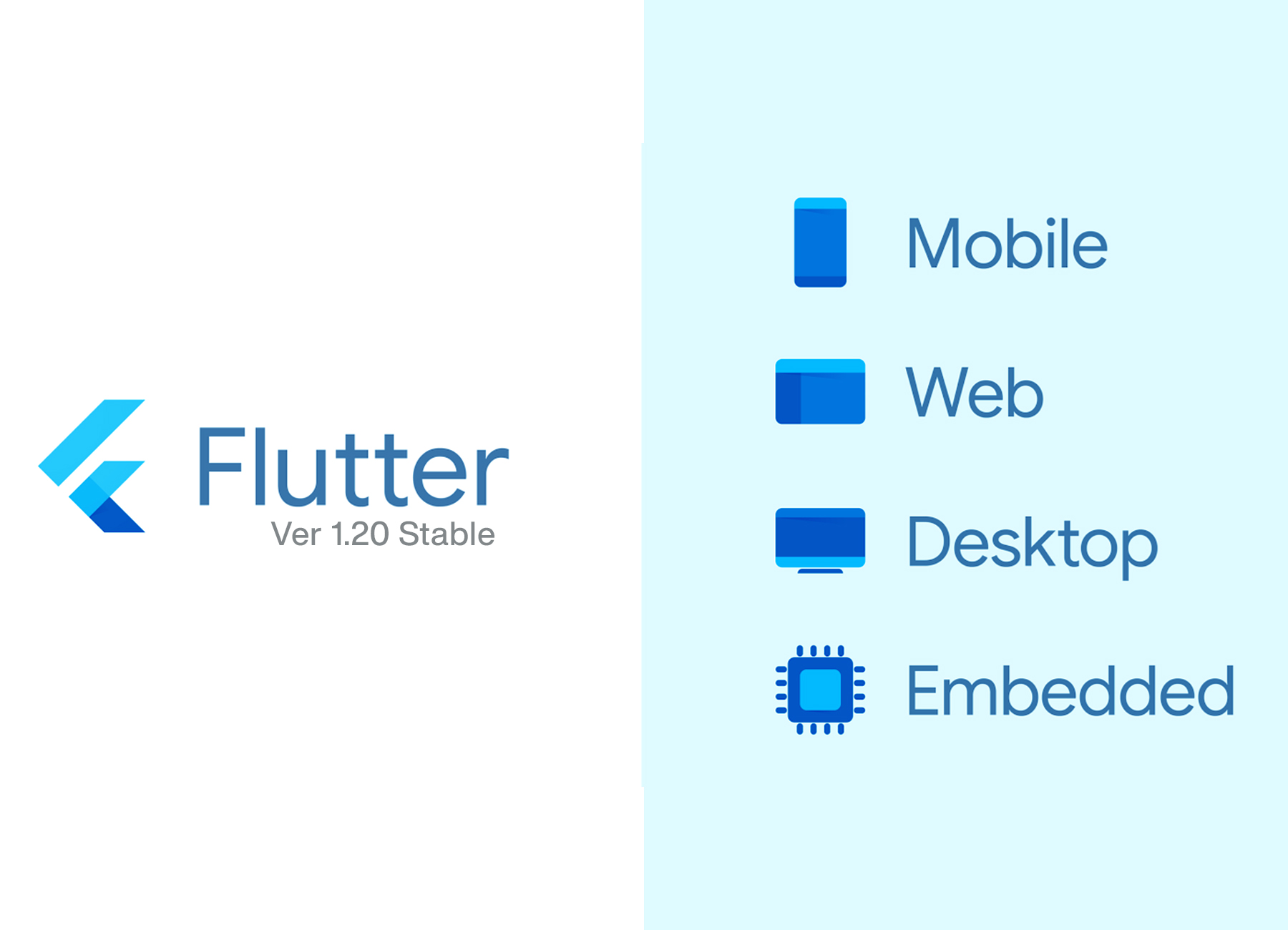The ongoing Google flutter provides a portable toolkit that helps in building stunning experiences. Flutter is an open, quick & productive platform for mobile, web and desktop from a single codebase.
A modern react-style framework includes in Flutter, a 2D rendering engine, ready-made widgets and development tools. All the major components work together to help in designing, building, testing, and debugging applications.

The purpose is to allow developers to produce high-performance apps that work flawlessly on multiple platforms. They support variations in visual loading, typography, icons and more.
Why Google Flutter?
Low-cost app development-Developing a native application for mobile or desktop can come up as a costly affair for the small start-ups with limited resources as app developers need to develop different codes for various operating systems.
Google Flutter solves this issue as it needs a single code base for creating application suitable for multiple platforms and reduces the app maintenance cost.
- Easy and quick to develop-
As Flutter developed applications supported on multiple platforms with a single code base, it doesn’t need to repeatedly write codes, which helps save lots of time and effort.
- Easy to avail plugins-
Developing a cross-platform application on Google flutter has a varied option for plugins to choose from, which ensures the entire development is comfortable and as flawless as possible.
- Less testing efforts-
Like single development benefits, cross-development applications do not need to test the same app on a different platform. Just one application version required quality tests, therefore needed less time and effort.
- Reusability of codes-
It is one of the most significant benefits of cross-platform app development. A single code can be used on multiple platforms, so now, App developers can accumulate their time devoted to app development.
- Hot reload-
Flutter embedded with hot reload feature, which ensures to accelerates & allow flutter mobile application development company to view real-time changes in the coding & app development process.
Introducing Google Flutter 1.20 news-
Where in the previous version, Flutter introduces substantial performance improvements, better support for metal on iOS as well as a new material widget, Google releases flutter 1.20 stable includes more performance enhancements, more UI improvements, updated visual studio code extension, autofill mobile text fills and much more.
Flutter and dart performance improvements-
There are multiple improvements in performance in the recent update in dart language. The latest improvement is to reduce the size of the application in the release version of the app. It will also support reducing the junk in the display of application animation with the help of the warm-up phase.
‘Cursor’ for better support-
Flutter recent update a mouse cursor for most web and desktop flutter applications, which will show on the top of the screen, or even one can specify the type of the supported cursor as per desire.
Autofill option for mobile text fields-
Autofill has now been added to the Flutter SDK in native applications already supported. Now prefilled data saved by the OS can be included in the framework for auto-filling. The feature will eventually be available on the flutter web.
Updated slider & picker-
There are a variety of pre-existing widgets that have been revised to match the current content requirements. These improvements include improved compatibility with Slider and RangeSlider, DatePicker with date range support and advanced design time-picker.
Preview of embedded Dart DevTools-
There is an update in the Visual studio code flutter extension. Preview of the latest features where analyzing Dev tools in the coding workspace. Dart DevTools menu allows you to select your favourite page embedded in your workspace code.
Network tracking-
The Dev tools update the network page allowing network profiling. Inside your app, you can monitor timings and other details, such as status and content type of your ** network calls **. You can track traffic on gRPC as well.
New ‘pubspec.yaml’ format-
If you’re a flutter plugin developer, then, the old pubspec.yaml is no longer allowed because the newer format does not define which plugin you are developing. All current plugins will continue to work for flutter applications to upgrade the version as soon as possible.
Other supported specifications-
Google claims Flutter 1.20 is the biggest update yet for the system, but more is yet to come. They are also focusing on integrating sound null protection support, updated versions of plugins Ads, Maps, and WebView, additional support for tooling, and more for mobile app development agency as well as also working on improved support for the web and mobile, particularly on Linux, where they just declared collaboration with Canonical.
Supporting Flutter app development-
As one of the pioneering app development companies, Zazz uses the innovative Google platform, Flutter, to provide next-generation app development services. The unmatched and extremely stable mobile UI architecture allows the development of high-quality, cross-platform native interfaces. For any further assistance, lets discuss. Our team will analyze the business requirements and shares the best compatible solution.
Also Read
Top 5 Cross Platform App Development Frameworks To Consider In 2021
Top 10 Flutter App Development Companies In The New York
Top 10 Flutter App Development Companies In The USA
Find Out How Flutter Is Paving Opportunities With Upcoming Fuchsia
The framework of Flutter: An Opportunity Or An Obstacle
What is Flutter App Development?
Recent Articles
100 million+ homes listed in some of the most preferred...
A sector that stands at USD 4 trillion in terms...












